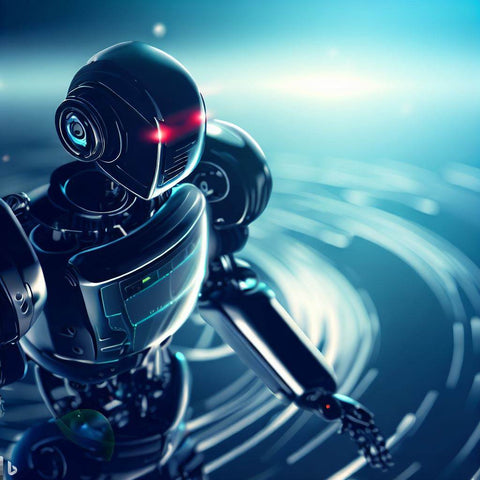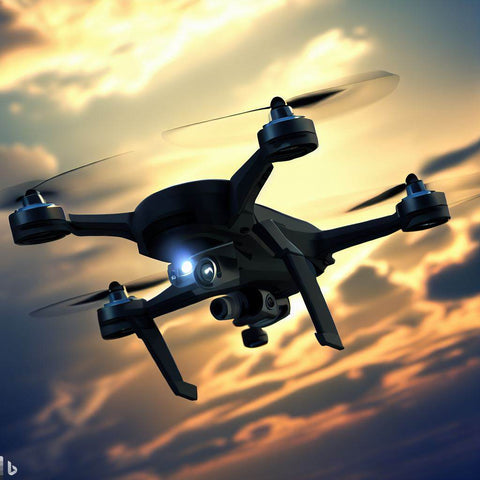Orders & Worldwide
Orders & Worldwide

The world of Robotics and Artificial Intelligence (AI) is advancing rapidly, promising great things in the future. These two fields' fusion paved the way for creating machines that exhibit unparalleled capabilities. From everyday chores like vacuuming our floors to the seamless delivery of packages to our doorsteps, robots, and AI are reshaping our lives in ways we couldn't have imagined before. These advancements have birthed a new era where machines seamlessly blend into our lives, enhancing efficiency and convenience.
This ongoing revolution isn't just about machines taking on mundane jobs. It's about the potential to push the boundaries of what's possible, making strides in areas as diverse as healthcare, transportation, and communication. As we explore the breakthroughs fueling this journey, we find ourselves at the forefront of a revolution that will undoubtedly shape how we live, work, and interact with technology in the years to come.
Imagine a world where robots are autonomous, seamlessly integrating into our lives and ensuring our safety. Welcome to the world of autonomous mobile robots (AMRs), a paradigm shift in automation. What's truly remarkable is that even the most advanced dynamic robots, such as those in car manufacturing, often follow pre-programmed instructions. However, a key factor in making "autonomous" robots truly independent lies in their partial autonomy. They maintain this delicate balance even as technology advances.
Think about robots like the Roomba, medical delivery assistants, and many robotics gracefully navigating physical environments without human assistance. Traditionally, robots were considered stationary machines in factories or controlled by humans. AMRs are changing this narrative by coexisting harmoniously with humans and advancing innovation. In this age of automation, AMR signifies a technological advancement and a fundamental shift in how we interact with machines. In the future, robots will interact with us, adapting, learning, and improving our world in ways we can't even imagine now.

The dream of human-like robots is no longer science fiction but a reality. Known as humanoid robots, they are carefully designed service assistants that seamlessly function alongside humans. These cutting-edge wonders mimic the human form while delivering professional service excellence. However, what truly sets apart the latest generation of humanoid robots is their ability to replicate human speech and movement and convey a broad range of emotions.
Unlike their earlier counterparts, these modern marvels have evolved from clunky, constrained machines into graceful entities. Many startups envision these humanoid robots revolutionizing industries by populating warehouses and factories. Humanoid robots have stormed into the forefront of innovation thanks to the rise of AI technologies. Some of the more notable names include SOPHIA, created by HANSON ROBOTICS; NADINE, designed by KOKORO; and ASIMO, a stunning machine created by Honda.
Collaborative robots, or cobots or co-robots, represent a remarkable robot category designed to operate harmoniously alongside human workers. They excel at tasks that don't neatly fit into full automation. These robots are meticulously engineered to ensure humans and machines can collaboratively tackle assignments in a shared workspace.
The true power of collaborative robots shines in their heightened safety features, user-friendly programming, and seamless integration with various equipment. This breakthrough represents a significant step in developing intelligent manufacturing ecosystems that synergize humans and machines.
Consider the tangible benefits of cobots - a reduction in repetitive motion injuries. These repetitive actions often trigger hernias, carpal tunnel syndrome, and back pain. Collaborative robots deftly perform these repetitive manual tasks, liberating human workers into more creative endeavors. Furthermore, the shift directly translates into fewer sick days due to workplace injuries.

Exoskeleton robots, a unique kind of professional service robots, are here to reshape possibilities. They're designed to mimic, boost, or enhance our bodies' movement. Think of them as helping hands for human motion, finding use in various areas from everyday life to military operations. These robots can even fuse with us, turning humans and machines into one, enabling actions our bodies couldn't manage alone.
One major role for these robots is in medicine. You probably know that many people find walking tough due to the conditions. Also, many people work in physically demanding jobs. Here's where wearable exoskeletons come in – they assist leg movements, benefiting both these groups. These smart devices hold the potential to open new doors for people, making it easier to move around and do tasks they might have thought weren't possible.
In the face of ever-changing consumer trends and challenges like labor shortages and trade disruptions, a new hero is emerging: service robots. These tech marvels are designed to step in and lend a hand where needed. They're like robots acting like humans, even chatting with us. Service robots dive into tasks humans might not prefer, such as cleaning, risky jobs, and household chores like washing dishes or clothes. These smart machines come pre-programmed with skills, working automatically based on the rules they've learned.
Samsung recently unveiled a groundbreaking innovation – the world's first personal robot vacuum, powered by Intel® Movidius™ Vision Processing Unit technology. They call it Jet Bot AI+. This robot sets itself apart by spotting more objects than other robot vacuums. It's got high-tech sensors that help it understand its surroundings, avoid obstacles, and get its cleaning done. With robots like Jet Bot AI+, a new era is unfolding where technology steps up to solve everyday problems. It's about making life easier, safer, and more convenient for everyone.

Recent years have seen drones/UAVs gain tremendous popularity, embodying sleek helicopter-like devices dotting the skies worldwide. Technically, unmanned aerial vehicles (UAVs) are powered aerial machines that operate without a pilot. They utilize aerodynamic forces for lift, offering autonomous or remote-controlled flight options. Their capabilities span from carrying payloads, whether nonlethal or potentially lethal, to being expendable or recoverable.
Drones/UAVs are transforming various industries, from agriculture to farmer's allies. Drones gather critical crop data, identifying pests, nutrient deficiencies, and diseases. This data is harnessed to generate precision maps, spotlighting areas needing intervention. This empowers farmers to allocate their resources strategically, maximizing efficiency.
Beyond agriculture, drones are scripting a revolution across infrastructure, maritime, and energy sectors. Their influence is rewriting aerial exploration rules introducing efficiency, accuracy, and innovation to the skies and the landscape below. As technology and imagination intertwine, drones have undoubtedly marked their place as one of the most impactful innovations of the modern age.
Robotic swarms are emerging as an exciting field at the intersection of swarm intelligence and robotics. The goal is to harness the collective power of many uncomplicated robots to solve intricate problems. Imagine an orchestra of robots, each playing a small but crucial role in a complex symphony. Swarm robotics is the synchronization of multiple robots, in which every robot plays an important role.
Swarm robotics is useful for scenarios requiring solutions in disorganized or expansive areas. It's a solution for situations devoid of pre-existing control systems, like communication networks or global localization setups. These scenarios require autonomous actions, which is precisely where robots thrive.
As technological progress advances, robotics is crucial in reshaping industries and human interactions. As we explore the vast spectrum of breakthroughs, we are witnessing a revolution in innovation and automation that transcends conventional boundaries. Autonomous robots have forever changed our perception of tasks, while assistive entities such as collaborative robots (cobots) and humanoids have completely redefined work dynamics. Rather than being mere machines, these devices combine human ingenuity and technology, improving efficiency, reducing errors, and creating a safer workplace. As robotics advances, our world will be increasingly interconnected, where machines and humans will work together seamlessly.
Sources:
https://www.simplilearn.com/tutorials/artificial-intelligence-tutorial/humanoid-robots
https://www.analyticsinsight.net/top-5-advanced-humanoid-robots-in-the-world-in-2023/
https://research.aimultiple.com/cobot/
https://www.automate.org/a3-content/service-robots-exoskeleton
https://rmas.fad.harvard.edu/unmanned-aircraft-systems-drones
http://www.scholarpedia.org/article/Swarm_robotics
0 de 3 itens selecionados
Selecione o primeiro item para comparar
Selecione o segundo item para comparar
Selecione o terceiro item para comparar
Deixe um comentário